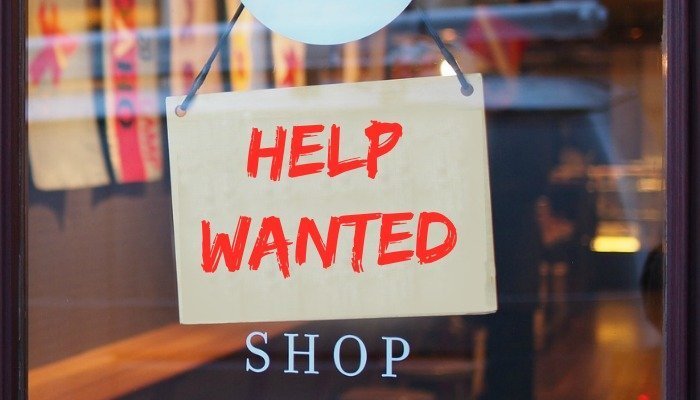Employers added a solid 196,000 new jobs to the US economy in March — slightly more than economists expected, according to the latest jobs report from the Bureau of Labor Statistics. But wage growth slowed back to a crawl.
Despite the tightening labor market, workers only got a 4-cent average hourly pay raise in March.
A month earlier, wages jumped about 10 cents, the fastest they had risen since 2017.
And all the hiring in March didn’t do much to change the already super-low unemployment rate, which is still 3.8 percent.
The new data shows that the US economy remains strong even though it’s not really booming.
For example, average monthly job growth in the first quarter of 2019 was about 180,000, which is lower than the 223,000 monthly average during the same period in 2018.
The decrease isn’t alarming; it just suggests that the economy isn’t growing as fast as before, and that the current labor shortage is making it hard for employers to fill all the open positions.
The strong labor market is a good sign for workers.
Such a low unemployment rate means that nearly every American who wants to work, and is able to, has snagged a job by now.
And those who lose their jobs, or decide to leave, probably won’t have a hard time finding another position.
However, the latest jobs report once again shows little wage growth, which remains the biggest weakness in the American economy.
The average US worker hasn’t seen their paycheck get much bigger since the Great Recession, which ended around 2009.
In March, private sector workers (excluding farmworkers) got an average 4-cent hourly raise, adding up to an average hourly pay of $27.70.
In the past 12 months, average hourly earnings have only increased by 3.2 percent, and that doesn’t even take inflation into account.
The jobs report does point to a strong and steady economy, though, with the most new jobs created for hospital and ambulance workers, nurses, and software developers.
So even though Americans are finding jobs pretty easily, they still aren’t seeing the so-called “economic boom” reflected in their paychecks.
“We think the labor market is the strongest thing in the U.S. economy right now,” said Luke Tilley, chief economist at Wilmington Trust. “We’re encouraged by the wage gains.”
The economy has now produced more than 21 million new jobs since the labor market bottomed out in 2010, and the unemployment rate has plunged from a peak of 10 percent in October 2009.
But in recent months, economists have seen reasons to doubt the strength of the economy.
The invigorating effects of the tax cuts enacted at the end of 2017 are expected to fade.
Large overseas economies have slowed, in part a reaction to continuing trade tensions.
And while the stock market has rallied since a rout at the end of last year, other important financial indicators — such as government bond yields — suggest that investors expect growth to moderate.
President Trump contends that the Federal Reserve slowed the economy last year by pushing interest rates too high, and has said he intends to nominate the conservative economist Stephen Moore and the former pizza chain executive Herman Cain to the central bank’s board.
“I personally think the Fed should drop rates,” Trump said today.
Trump won’t necessarily get his way on interest rates.
The Fed has already taken a softer stance: As recently as December, the central bank said it could raise rates in 2019, but it has since signaled that it probably wouldn’t do so.
Economists said the latest jobs report showed that the Fed’s willingness to hold interest rates at current levels was probably the right response for the economy.
“It doesn’t tell the Fed that it’s doing the wrong thing by remaining patient,” said Ellen Zentner, chief United States economist at Morgan Stanley.
